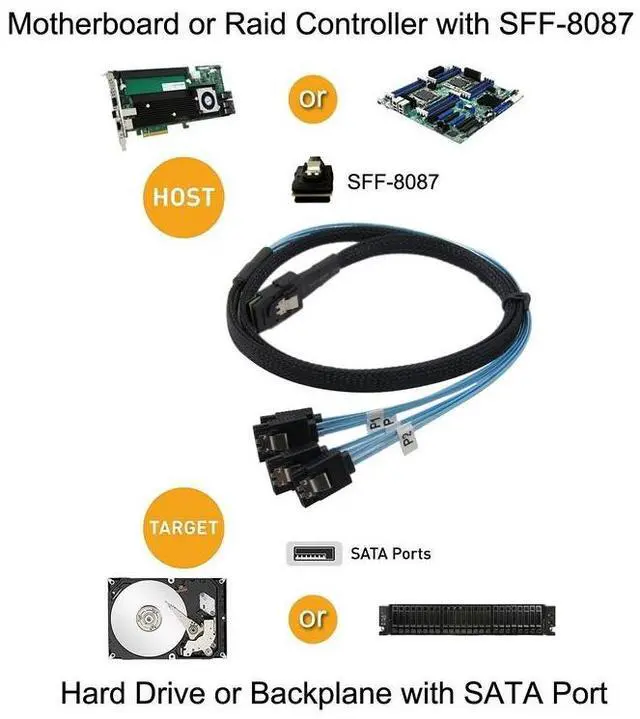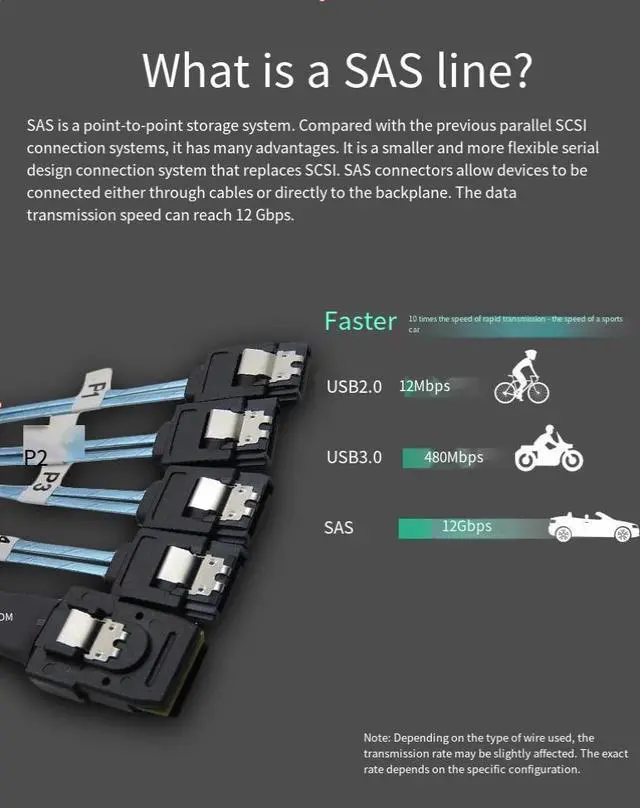This adapter cable supports data transmission through four channels of 3Gbps*4Lane, with a transmission rate of up to 12Gbps.
SAS (Serial Attached SCSI), or Serial Attached SCSI, is a new generation of SCSI technology. Just like the currently popular Serial ATA (SATA) hard disks, they both adopt serial technology to achieve better transfer speeds and improve internal space by shortening connection cables, etc. SAS is a brand-new interface developed after the parallel SCSI interface. This interface is designed to enhance the performance, availability and scalability of the storage system, and to provide compatibility with SATA hard disks.
The interface technology of SAS is backward compatible with SATA. Specifically, the compatibility between the two is mainly reflected in the compatibility of the physical layer and the protocol layer. At the physical layer, the SAS interface and the SATA interface are fully compatible. SATA hard disks can be directly used in a SAS environment. In terms of interface standards, SATA is a sub-standard of SAS. Therefore, SAS controllers can directly control SATA hard disks, but SAS cannot be directly used in a SATA environment. Because SATA controllers cannot control SAS hard disks; At the protocol layer, SAS consists of three types of protocols, and data transmission is carried out using the corresponding protocols based on the different connected devices.
Among them, the Serial SCSI Protocol (SSP) is used to transmit SCSI commands; The SCSI Management Protocol (SMP) is used for the maintenance and management of connected devices. The SATA Channel Protocol (STP) is used for data transmission between SAS and SATA. Therefore, with the cooperation of these three protocols, SAS can be seamlessly integrated with SATA and some SCSI devices.




